Originally posted on Steam on May 29, 2023. We are catching up on the backlog and will eventually post the devblogs here as they are published.
Disclaimer: Features discussed in this post reflect what is currently under development and not necessarily what will be shipping with the next test. Anything mentioned below may change at any time due to the experimental nature of Pre-Alpha development. Nothing mentioned here should be taken as a promised feature or additional to the eventual game.
In Anvil Empires, thousands of players will work together to build vast empires spanning many towns and villages, each involved in one or more industries. Operating these industries will require infrastructure to be built across the world. In current Pre-Alpha builds, players can already build roads but in this upcoming test we will be adding water infrastructure like Aqueducts and Canals. In this devblog we will go over how water infrastructure works and how they are used to generate power and optimize activities like Smithing.
Aqueducts & Canals
Water infrastructure is used to transport water from rivers and seas to other locations in the world. This will be useful for a variety of applications like supplying water for agriculture, but it can also be used to generate power which can be used in the Smithing process.
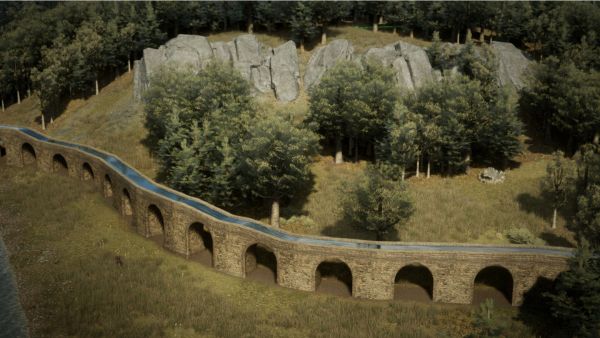
There are two types of structures for building water infrastructure. The first is Aqueducts, which are used to move large quantities of water between sources and Settlements. The second is Canals, which are for distributing water within a Settlement. Aqueducts are higher bandwidth and can be built anywhere in the world while Canals are lower bandwidth and can only be used locally. Canals have the added benefit of being dynamically scalable so they are ideal for placement between structures within a Settlement.
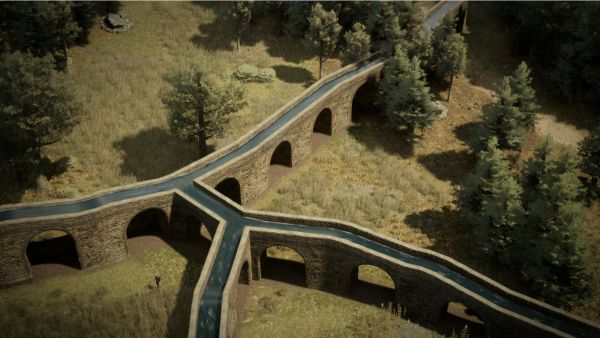
One of the goals with Anvil is to make gameplay feel as tactile and organic as possible. To that end, water movement relies on gravity which means that Aqueduct and Canal placement depends heavily on the topology of the landscape. Water moves downhill, which means hills and mountains will naturally be a factor when determining ideal locations for settlements. A lot of work was done to make water behave intuitively as it traverses through Aqueducts and Canals, even if it is an approximation to reality as opposed to a fully accurate physics simulation.
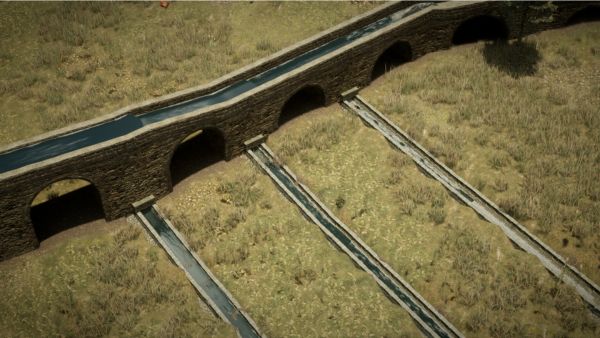
Building a Powered Workshop
Besides supplying water, Aqueducts and Canals can be used to generate power for workshops. Water Wheels can be constructed over canals and rivers to generate force, which can in turn propagate through a series of pullies and ultimately harnessed by equipment. It's up to players to design and build their network of pullies and the ropes that connect them. However, such power infrastructure can only be built inside *Workshop Areas*, which are player defined zones for industry structures, and aren't meant to be strung across a Settlement. It was important for the theme of the game that power infrastructure didn't feel Steampunk like or too advanced for the era the game is inspired by.
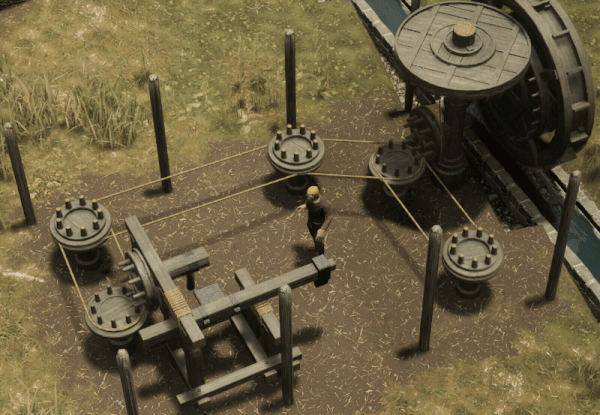
While Water Wheels will be the one way to drive such equipment, players will be able to build other infrastructure for power in the future, which will have their own benefits and trade-offs. The ultimate goal is for power to be supplied from different types of sources, depending on what's optimal for the geography around a Settlement.
Advanced Smithing
In our previous Devblog, we covered the basics of Smithing. Forging a blade for a weapon or tool will initially be a slow and manual process. With infrastructure and the right equipment, the process can be parallelized and significantly sped up. By harnessing power generated from Water, the forging process can also be improved to allow for higher quality blades to be achieved.
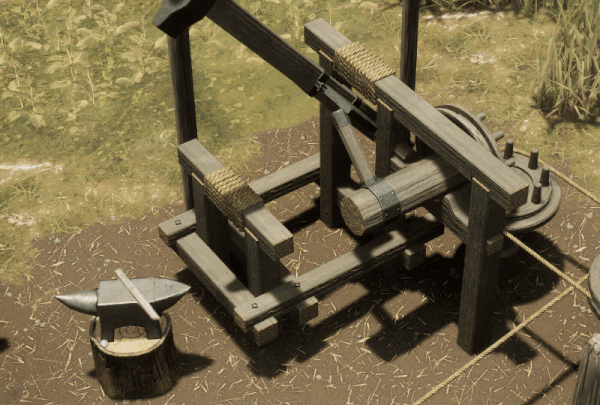
There will be two powered structures involved in this process. The first is the Trip Hammer. When a Trip Hammer is connected to an Anvil and a power source, it will automatically hammer metal ingots instead of requiring a player to manually perform the action.
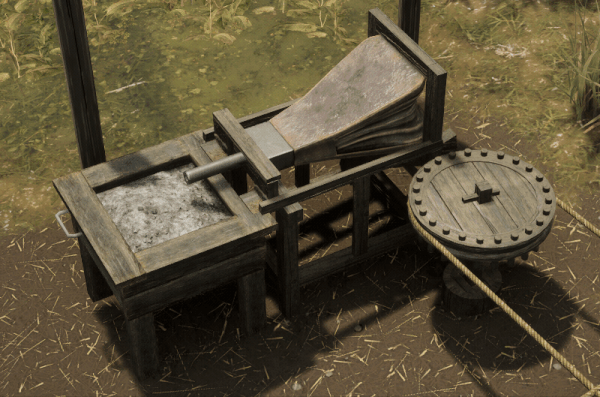
The second is the Bellows. When Bellows are attached to a Forge, it will not only heat ingots much faster, but it will also allow ingots to reach the higher temperatures which are needed to achieve the highest quality blades.
Be sure to add Anvil Empires to your wish list on Steam. If you want to join the community, head over the to official Discord server or Subreddit.



